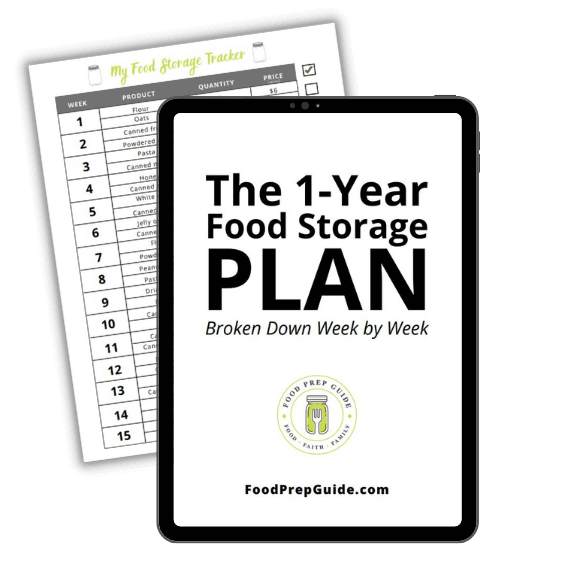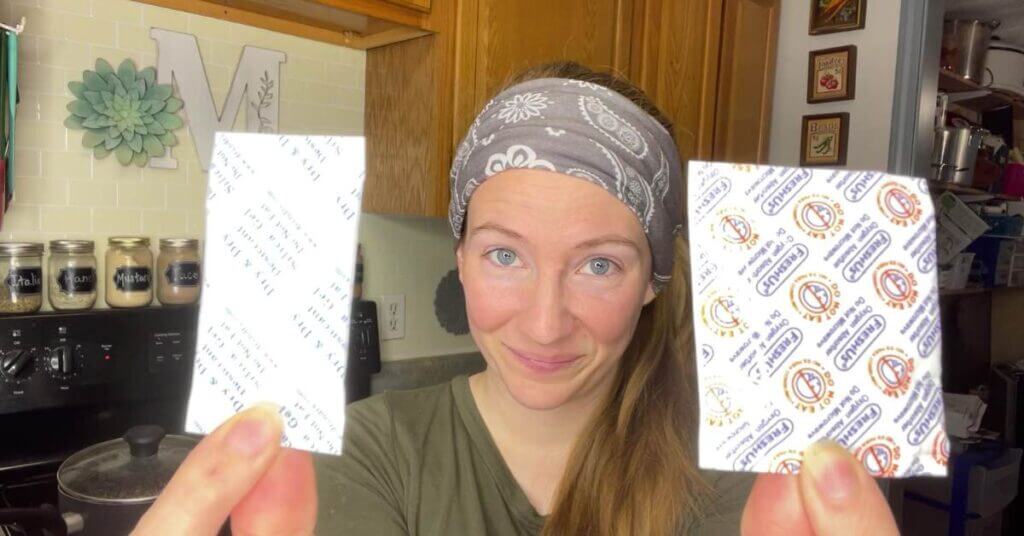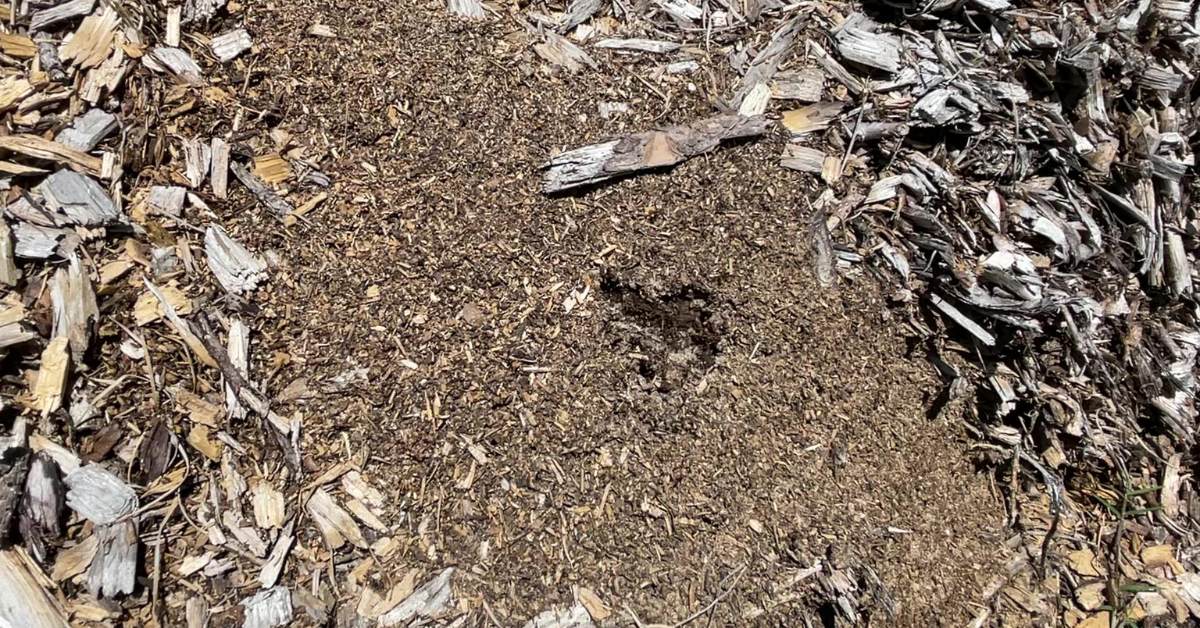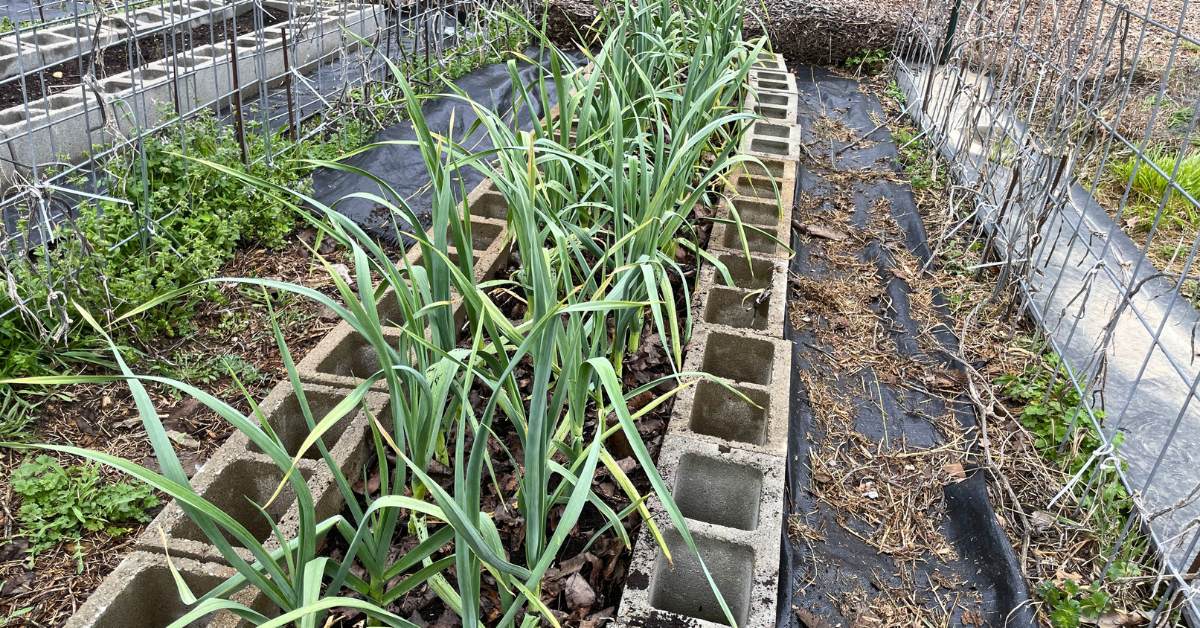If you’ve ever found yourself puzzled by those small packets you find in food storage containers, then you’re in the right place.
Today, we’re chatting about all things oxygen absorbers and silica gel packs—also known as desiccant packs.
- What exactly are they?
- What purposes do they serve?
- How do you choose between them?
- Most importantly, what’s the number one safety consideration when using either one?
Let’s break it down!
Oxygen Absorbers vs Silica Gel
Oxygen Absorbers: These little packets contain iron powder and are aptly named because they absorb oxygen. When iron mixes with oxygen, a chemical reaction occurs, sucking the oxygen out of the surrounding environment.
This makes them invaluable for preserving food by creating an oxygen-free environment.
Silica Gel Packs (Desiccants): These packs are filled with silica gel and serve the purpose of absorbing moisture. In food storage, both oxygen absorbers and silica gel packs play a crucial role in extending the shelf life of products.
The choice between them depends on whether you prioritize an oxygen-free environment or protection against moisture for a particular food item.
Rather Watch Than Read? Here’s the Video Tutorial
Safety First: Oxygen Absorbers
The number one safety consideration when using oxygen absorbers is to avoid pairing them with high-moisture products.
Foods like dry, yet sticky prunes and even seemingly dry items like brown sugar—which contains more than 10% moisture—should not be combined with oxygen absorbers.
High moisture in an oxygen-free environment can create a breeding ground for toxic bacteria. Despite differing opinions on the prevalence of botulism, adhering to this safety standard ensures peace of mind in your pantry.
Choosing the Right Oxygen Absorber Size
Oxygen absorbers come in various sizes measured in cubic centimeters (CCs).
The size you need depends on the container and the type of food you’re storing. (Here are the food storage containers we recommend.)
A general rule of thumb is that a quart jar requires 100 CCs, while a 5-gallon bucket needs 2,000 CCs to adequately remove oxygen.
You can use multiple smaller packets or opt for a single larger one, and it’s okay to a higher CC count than needed.
Just be sure not to go below the minimum required for effective oxygen removal.
FREE FOOD STORAGE PLAN!

Does gathering and storing a year’s worth of food for your family seem overwhelming and unachievable?
Make it easy with our step-by-step plan. Subscribe to our weekly newsletter & we’ll send it to you FREE!
What to Look For When Buying Oxygen Absorbers
Look for oxygen absorbers that are packaged individually in sealed packets of five or ten:
Prices pulled from the Amazon Product Advertising API on:
Product prices and availability are accurate as of the date/time indicated and are subject to change. Any price and availability information displayed on [relevant Amazon Site(s), as applicable] at the time of purchase will apply to the purchase of this product.
Avoid purchasing them in bulk packaging where all absorbers are in one bag.
Once you open the package, you need to use the absorber immediately and reseal the remaining ones promptly.
Look for an indicator on the packet (often pink) to ensure it hasn’t been exposed to oxygen for too long.
Silica Gel Packs: The Moisture Fighters
Silica gel packs (or desiccants) look similar to oxygen absorbers but focus on moisture absorption. While they aren’t used as frequently, they’re handy for preventing moisture-related issues in food storage.
Prices pulled from the Amazon Product Advertising API on:
Product prices and availability are accurate as of the date/time indicated and are subject to change. Any price and availability information displayed on [relevant Amazon Site(s), as applicable] at the time of purchase will apply to the purchase of this product.
Home dehydrated foods, especially those prone to mold, benefit from the addition of a silica pack to your jar or container.
If you live in the ultra-humid south, it’s even more important. Think about food items that are prone to ruin due to moisture—like rice, for instance. Those are the items you want to use with silica gel packs.
Desiccants are not as finicky as oxygen absorbers. In fact, you can reuse them again and again.
Important: Don’t Use Them Both at the Same Time
Oxygen absorbers require a small amount of moisture to activate. If placed with a desiccant pack, which pulls moisture from the environment, the oxygen absorber may become ineffective.
When faced with the choice between the two, prioritize the oxygen absorber—especially considering that oxygen is the primary adversary for most foods.
We hope this guide has been helpful to you!
If you’re prepping your pantry for long-term storage, check out Food Storage Management Made Easy:












